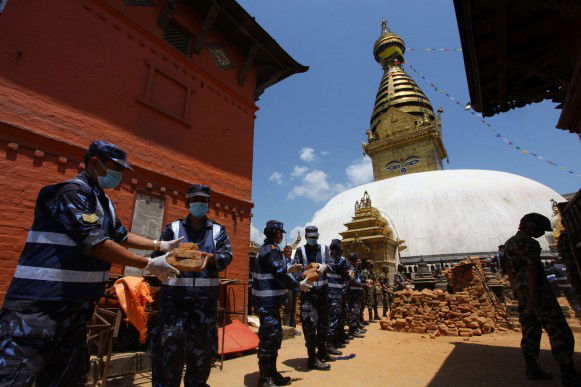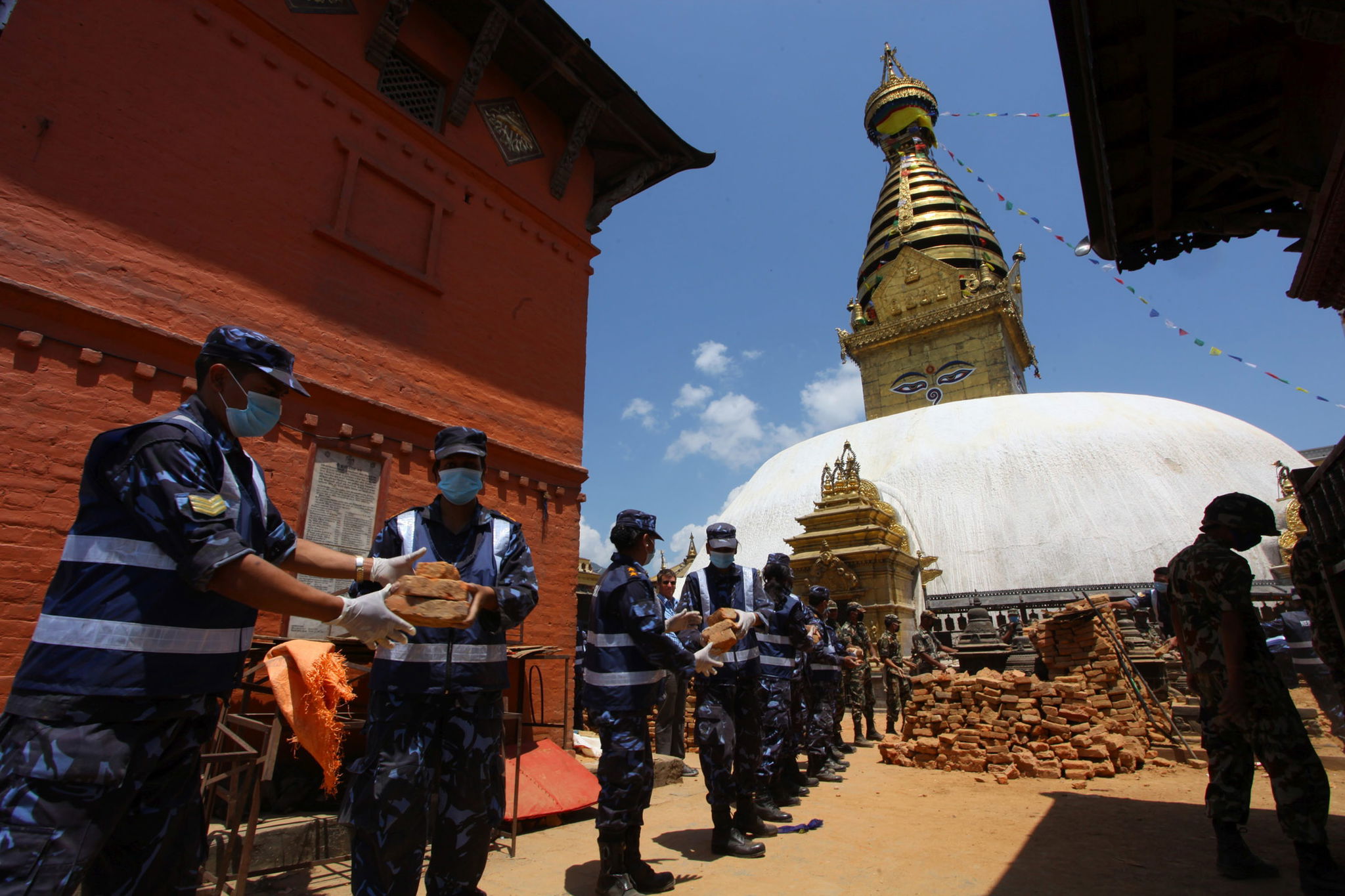Articles features
Unesco team at Swayambhunath temple to prevent looting

Kathmandu, May 2
The iconic central stupa, with
its gazing eyes of the Buddha at Kathmandu's iconic Swayambhunath
temple still stands tall at the hilltop, but the surrounding structures
inside this famed Buddhist temple complex has been reduced to rubble.
A Unesco team has started a "rescue mission" to prevent looting of artefacts from this World Heritage Site.
The
devastating earthquake that rocked Nepal on April 25, has not only led
to the loss of human life, it has also damaged several unique cultural
sites that have been drawing tourists for decades.
The
seven-member Unesco team is assessing the damage, with priority being
given to prevent looting of artefacts from the destroyed site.
“We
are doing an inventory of stones and terracotta objects that have
crumbled due to the earthquake. The first concern for us is to prevent
the objects from looting and for this we are trying to get keys of one
of the stores at the temple so that we can store these objects,†David
Andolfatto, Unesco consultant, told IANS.
“Right now we are not
thinking of restoration because for that we need money and restoration
can be done only when we have rescued the objects. At the moment, we are
doing the rescue work,†he added.
Swayambhunath temple, considered among the oldest religious sites in Nepal, is revered by both Buddhists and Hindus.
After completing the work here, they will head to Kathmandu's Durbar Square and Kasthamandap Temple for rescue operations.
Even
though the magnificent stupa of the Swayambhunath temple is intact with
only one side of it partially damaged, the curio shops, huts and
religious monuments inside the complex have been destroyed in the quake
that killed over 6,000 people and left over 10,000 injured and millions
displaced.
This religious complex situated on a lofty hilltop is
popularly known as the “Monkey Temple†as many monkeys surround the
temple premises. The monkeys are still there, moving amidst the
destruction.
According to Unesco, there are seven monument zones
in Kathmandu which include three Durbar squares in the three cities of
Kathmandu, Bhaktapur and Patan and four religious sites: Swayambhunath
and Bauddhanath and Hindu temple complex at Pashupatinath and Changu
Narayan.
The team, consisting of officials and volunteers, is
planning to involve the local community and archaeologists when they
start reconstruction process. It also plans to train the local community
in basic iconography.
While recovering the artefacts, these
conservators have also laid hands on around 1,000 clay objects which
they claim have been discovered for the first time.
“Right now we
are making a list of objects we have found and then we will compare it
with the inventory list. That should give us an idea about the damage
and lost objects,†concluded France-based Andolfatto.
(Shweta Sharma can be contacted at shweta.s@ians.in)




































